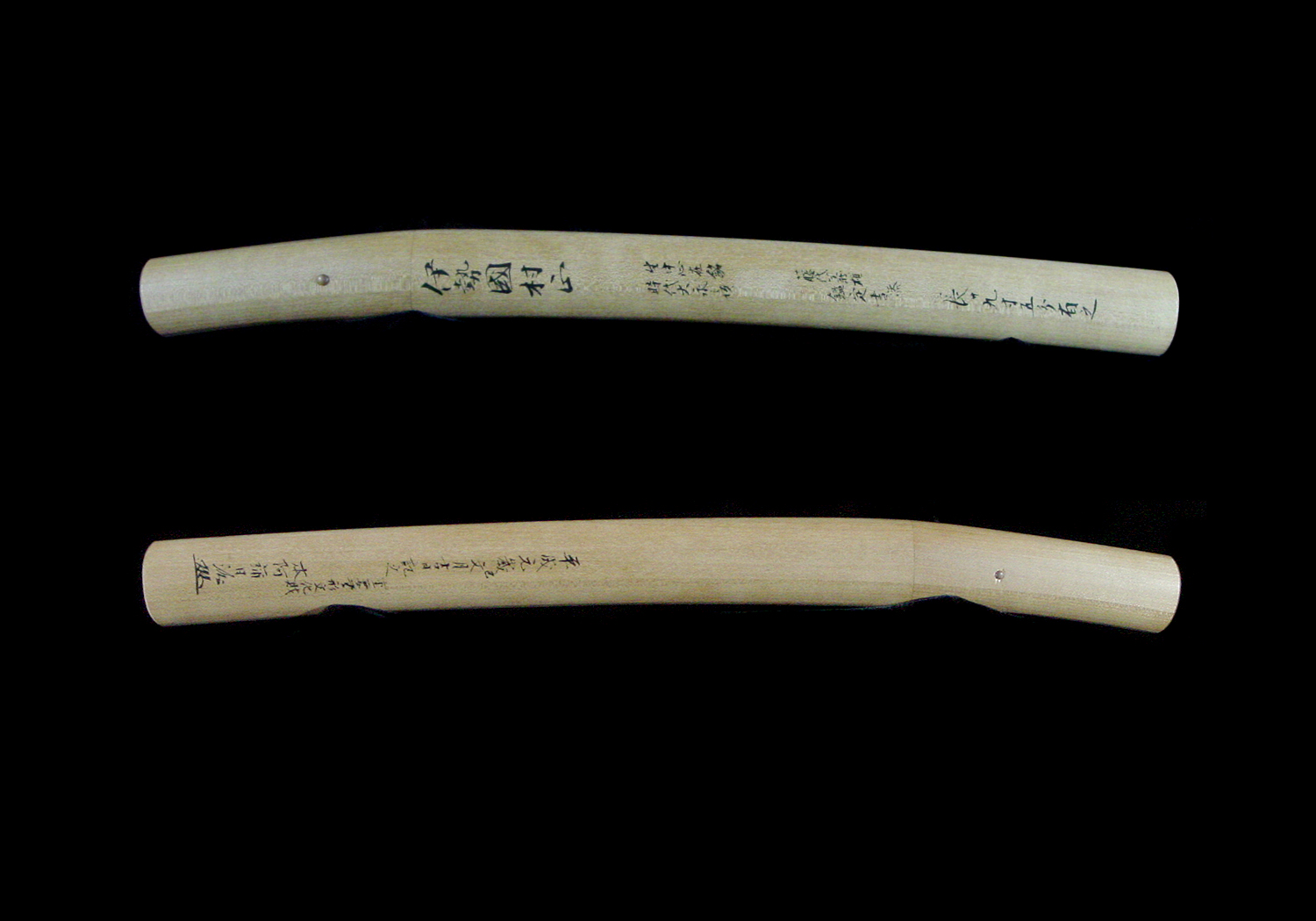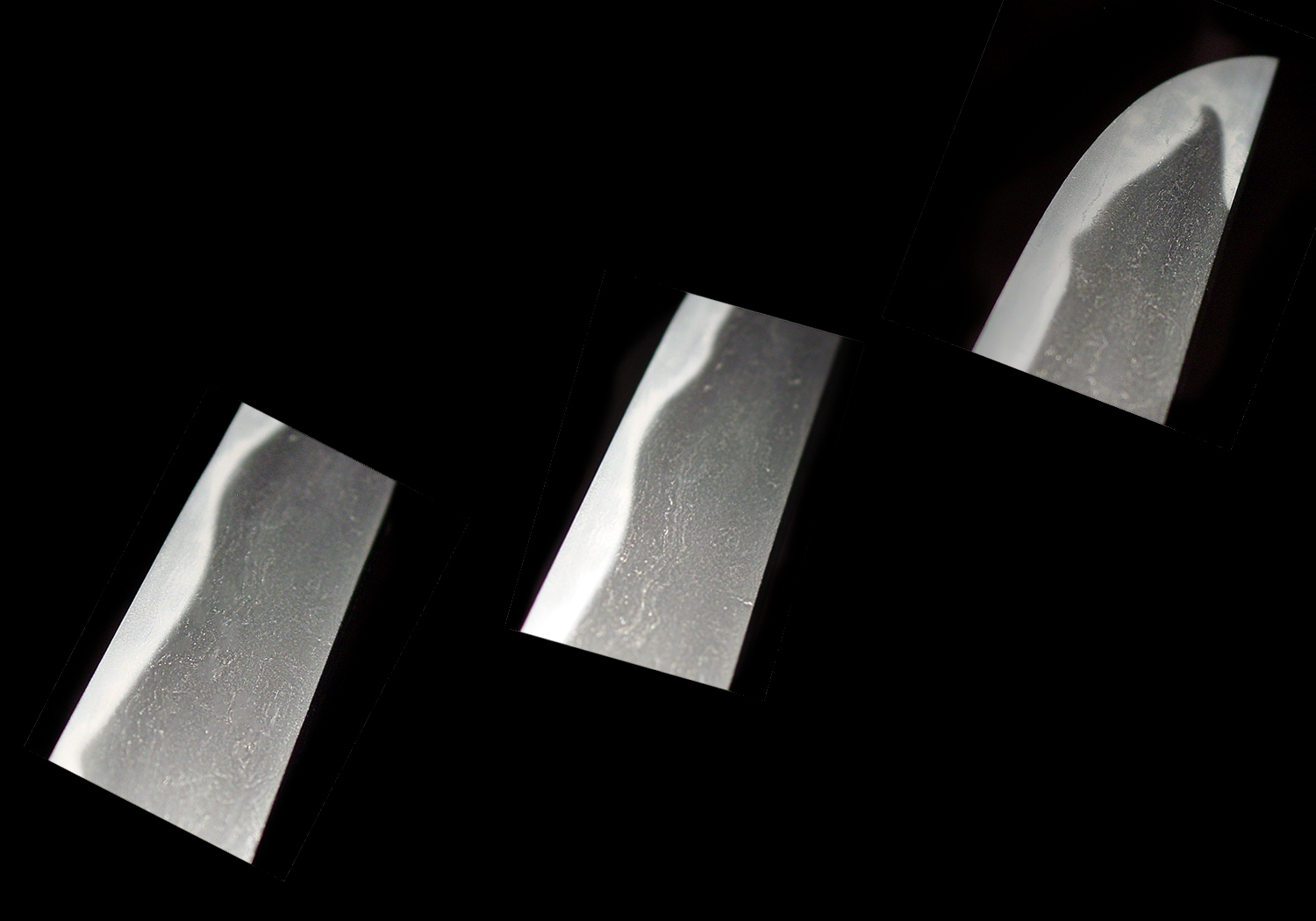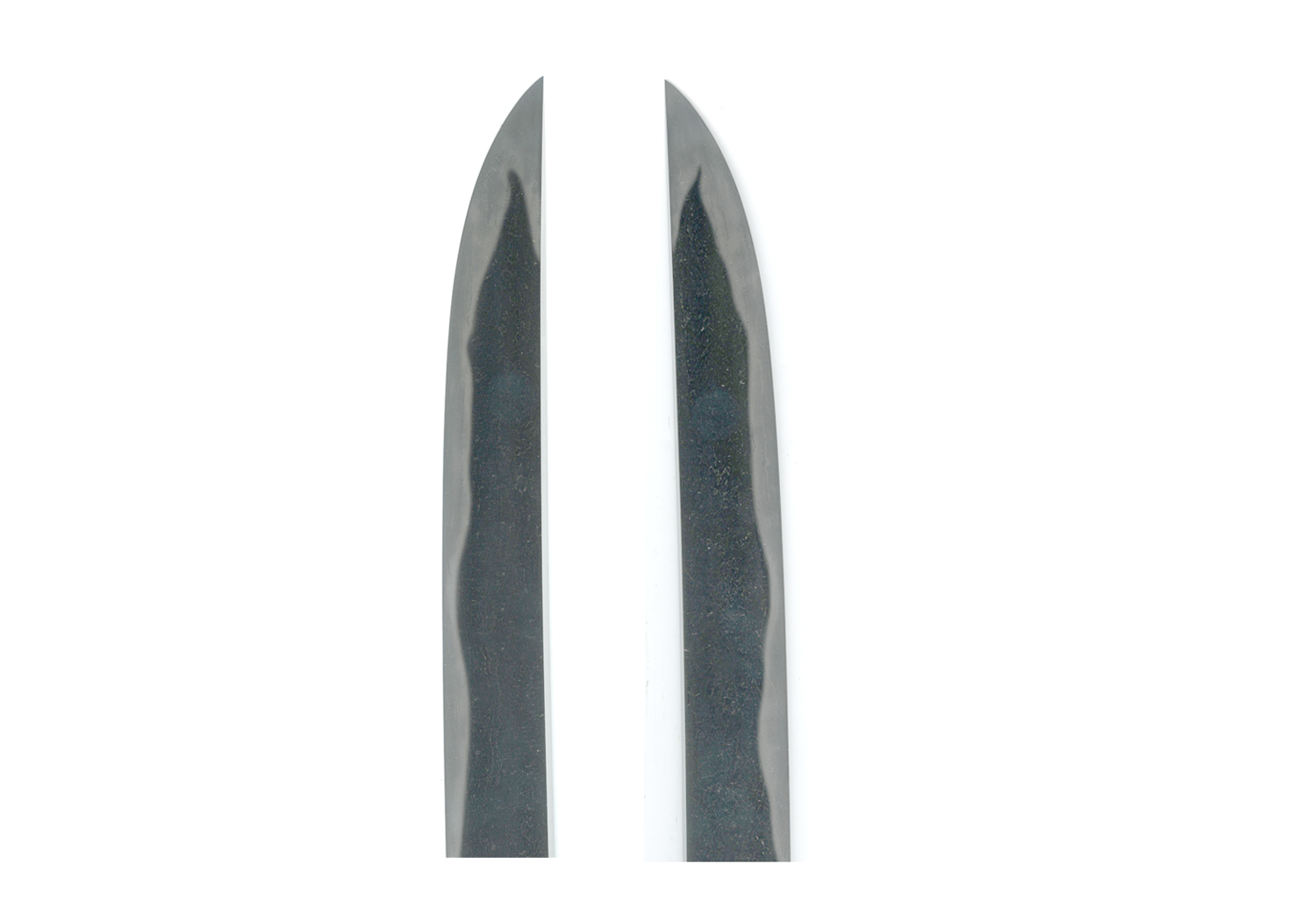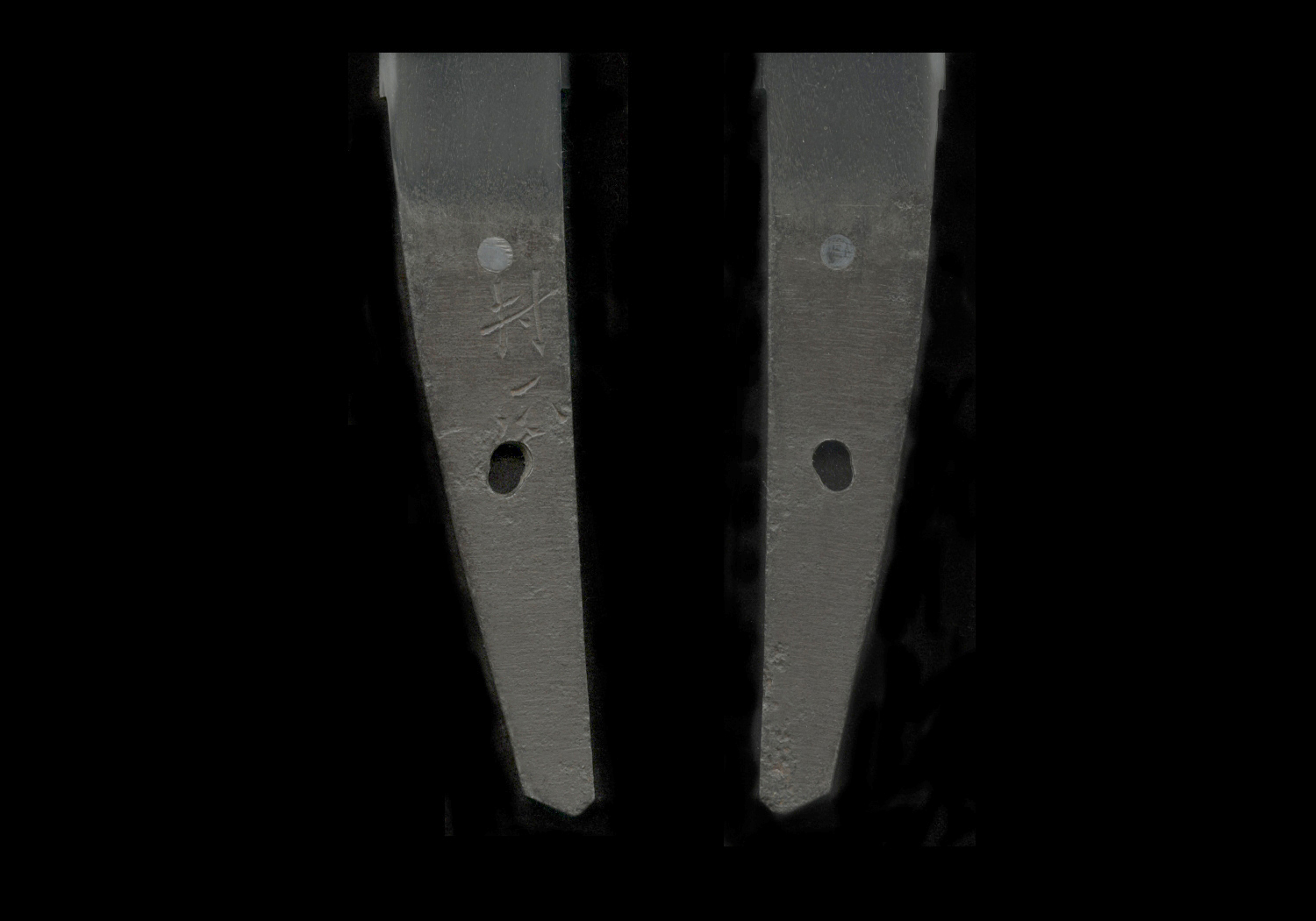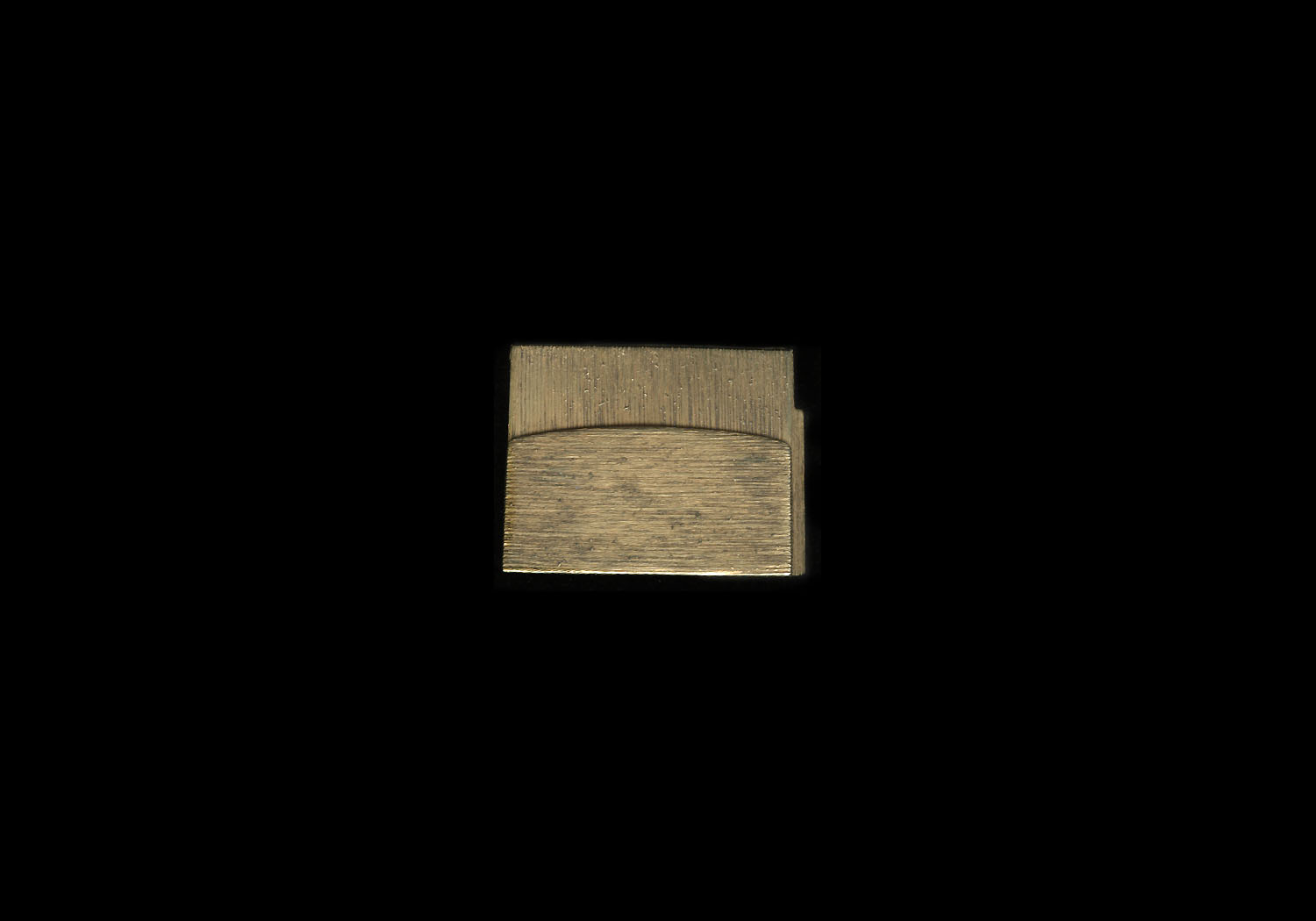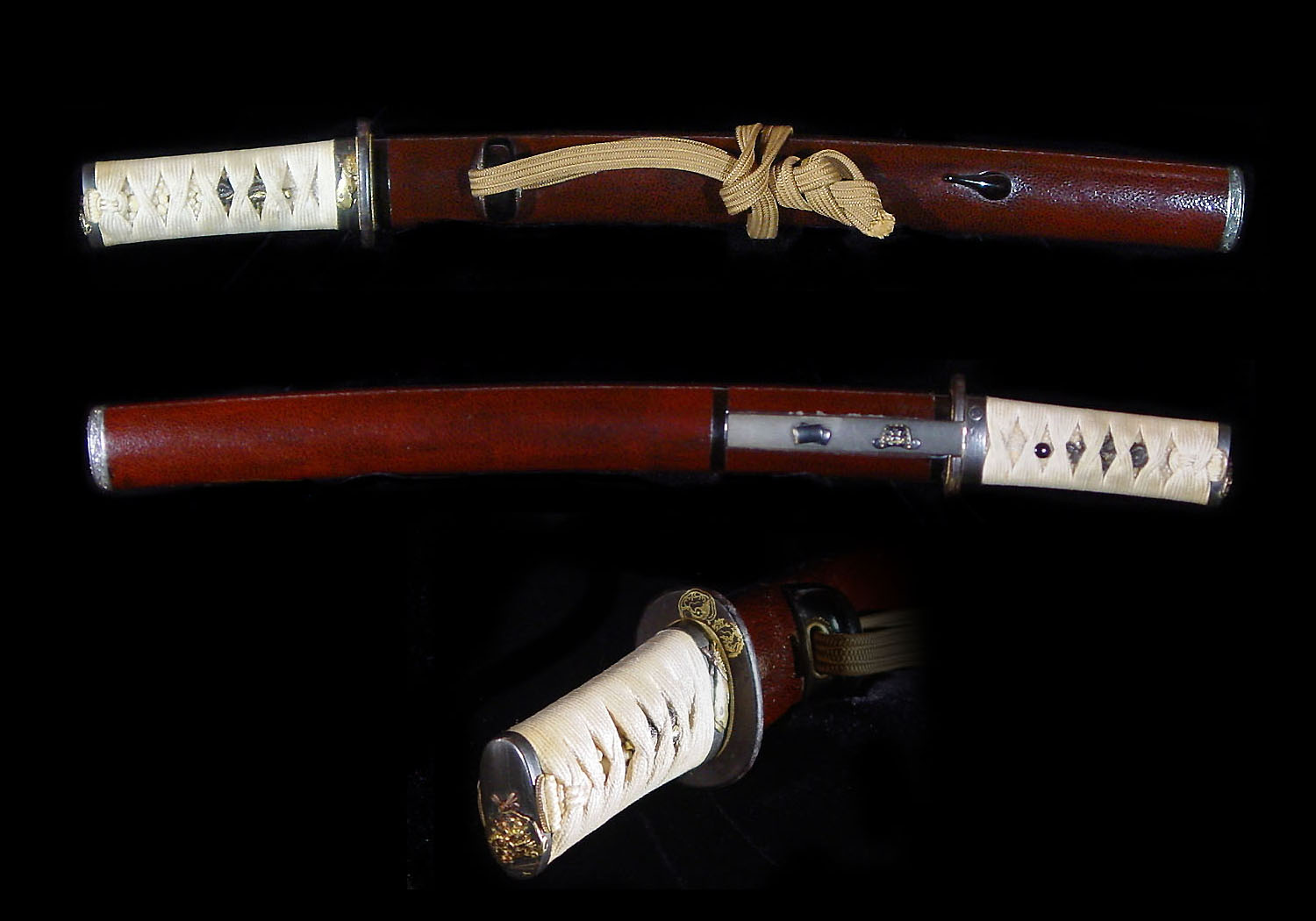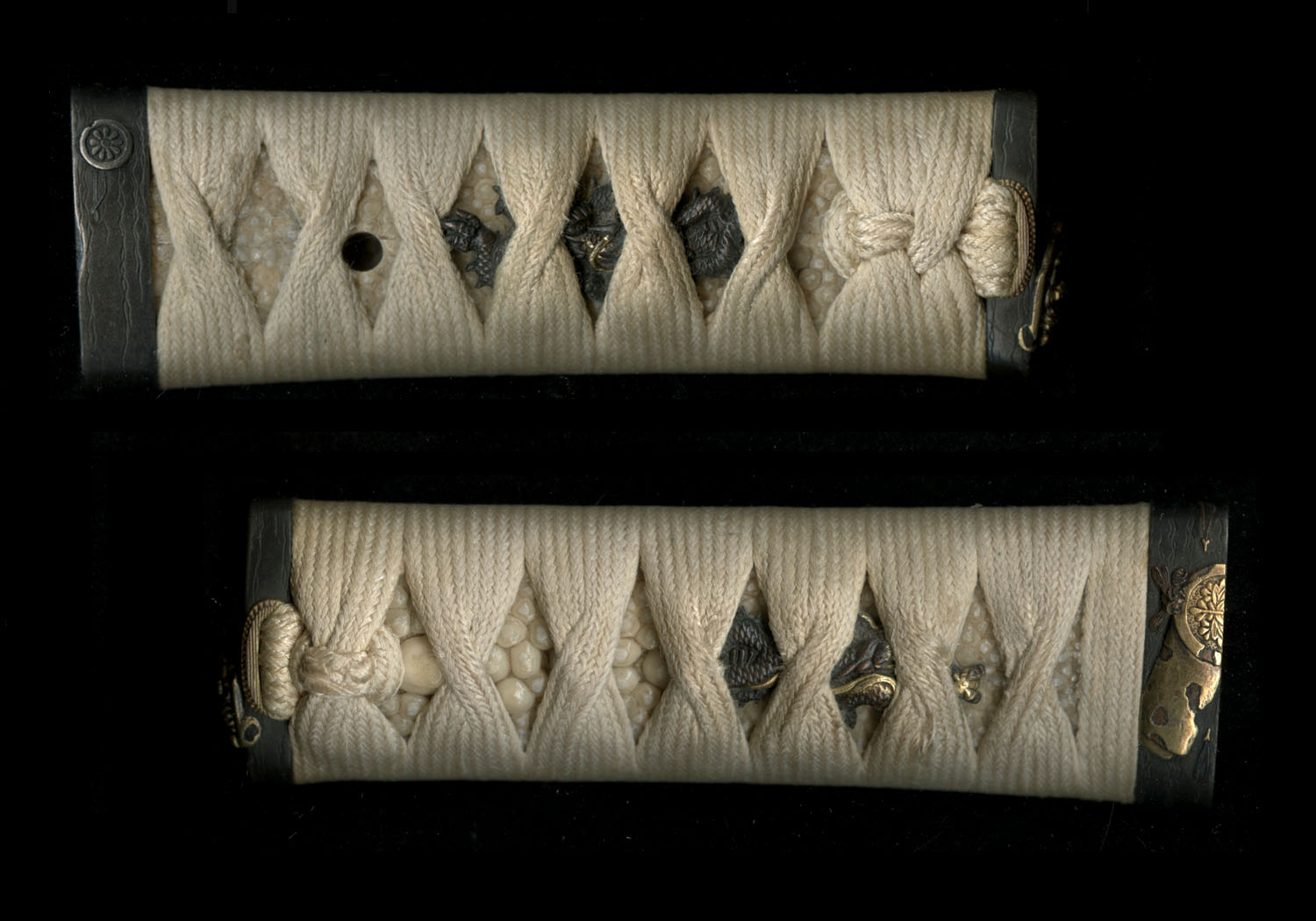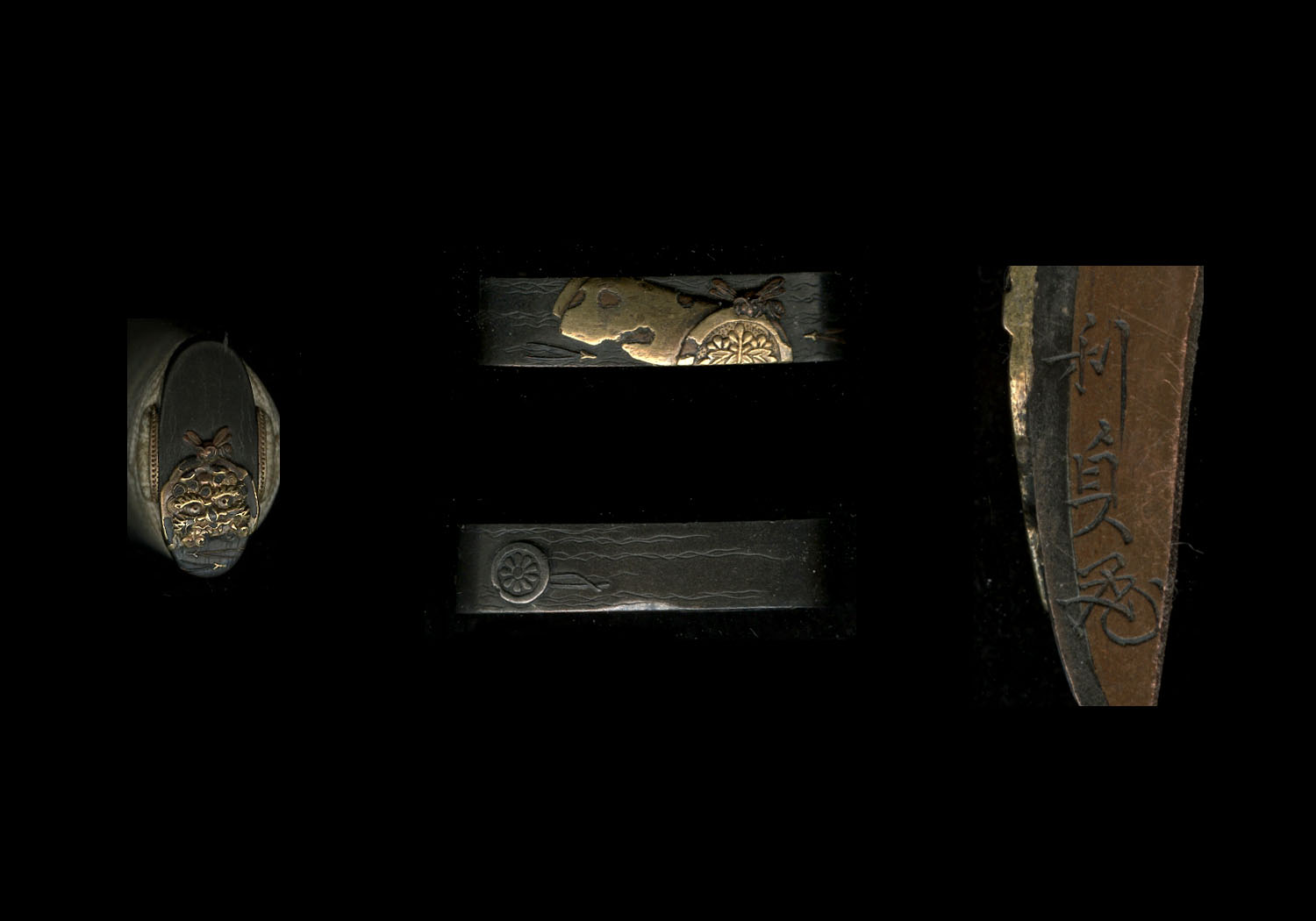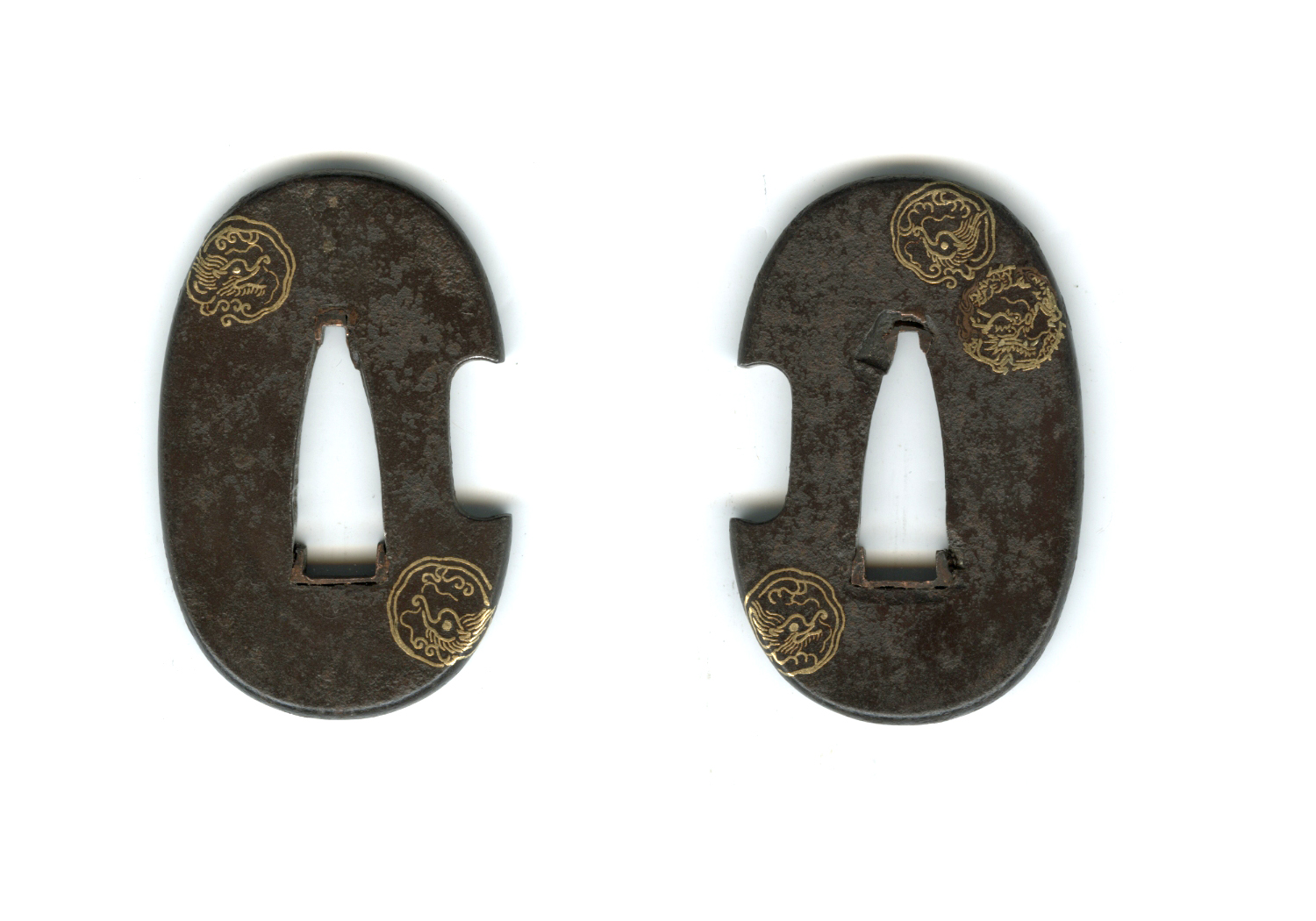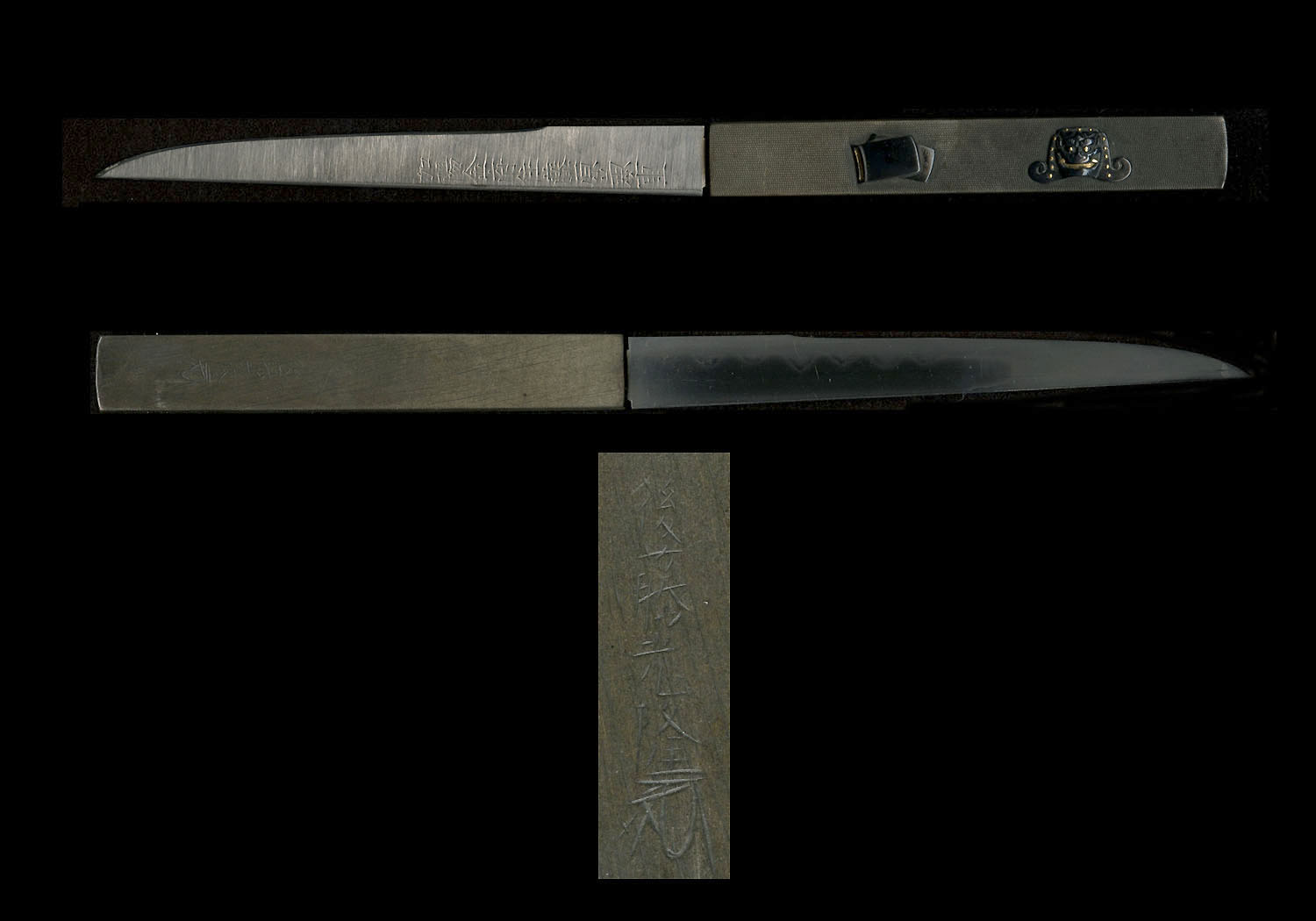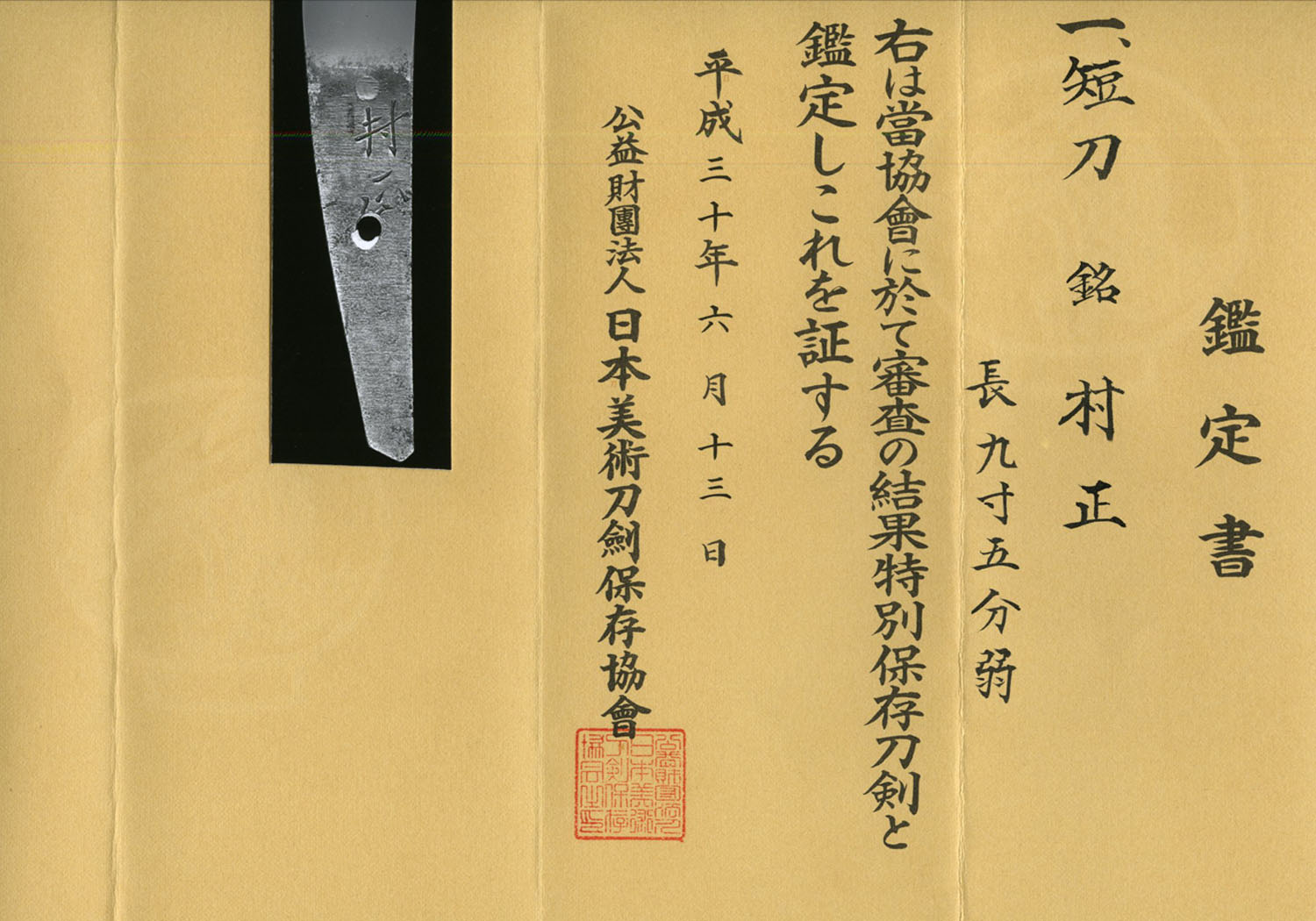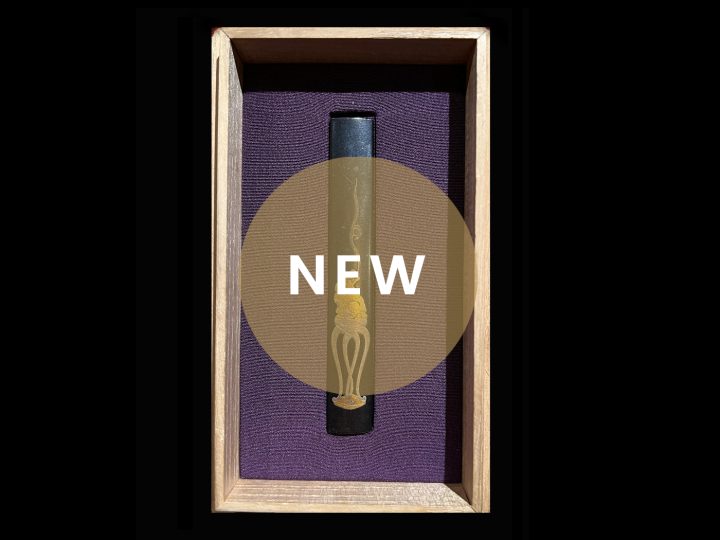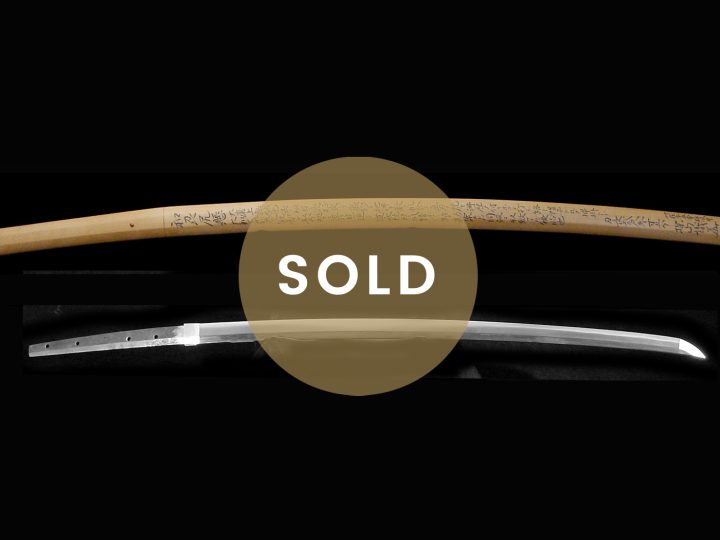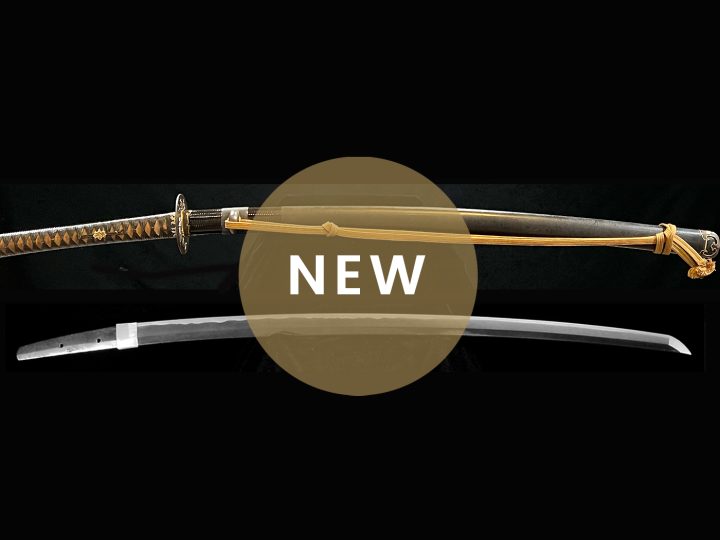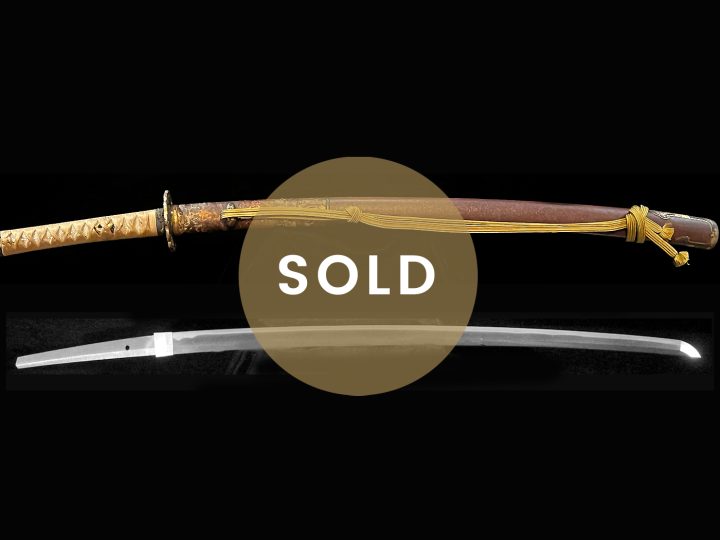
It is a pleasure to be able to offer for sale this tantô by the famous (or infamous) smith, the second generation Muramasa. For hundreds of years the swords of nidai Muramasa (二代村正) have been regarded as swords with evil powers. When we say evil powers we are speaking about their supposed ability to cause bad things to happen to their former owners, the Tokugawa family. The Tokugawa family who ruled Japan for 250 years felt that the swords of Muramasa boded ill for their family, thus fostering and enhancing this reputation. For more information about the history of Muramasa and his legend, please refer to the following article:, Nidai Muramasa.
This tantô is a beautiful sword that has survived with its original signature and embodies all of the skill and attributes that made this smith so famous. The length of this tanto is 28.8 cm or 11 5/16 inches. The moto-haba is 2.8 cm or 1.10 inches and the nakago length is10.5 cm or 4.125 inches. The hada is a flowing itame that is covered in minute ji-nie. The hamon is yamagata-midare-ba with some gunome, notare, and togariba mixed in. The hamon is the same on both sides of the blade and this is an important kantei point for this smith. The bôshi is midare-komi with a ko-maru turn back with hakikake. The nakago is ubu with two mekugi-ana.
This blade comes in a very nice shirasaya with a sayagaki by Honami Nisshu stating that this is an important blade from the Daiei era (ca. 1521) by Sengo no Kuni Muramasa. It also has a two-piece gold foil habaki that is in superb condition. This blade is, in my opinion, an excellent candidate for Jûyô Tôken designation.
This blade comes with an very pleasing set of koshirae. The saya is lacquered with a red lacquer done in a textured surface. The menuki are are shakudo and gold dragons. The tsuba is iron with small gold dragons done in gold inlay. The kozuka is shibuichi with a nanako surface on the obverse and smooth on the reverse. There are shakudo and gold raised inlays of what appear to be armor sode together with a shakudo and gold figure of an Oni’s face. This kozuka is signed by Gotô Mitsutaka who worked around 1800. The fuchi and kashira are unusual. The kashira has an Oni’s face similar to that on the kozuka with a wasp perched on top of it. The fuchi has a large inlay of what appears to be a worn roof tile with a Kiri mon on the end and a wasp matching that one on the kashira. These are done in gold and copper. On the other side is a small family mon done in silver and a single pine needle done in copper and gold. I am sure that all of these symbolic items add up to a famous story, but I am at a loss to be able to tell you what it is. The quality of the fittings is very nice. The ko-gatana is signed Kaneshige.


